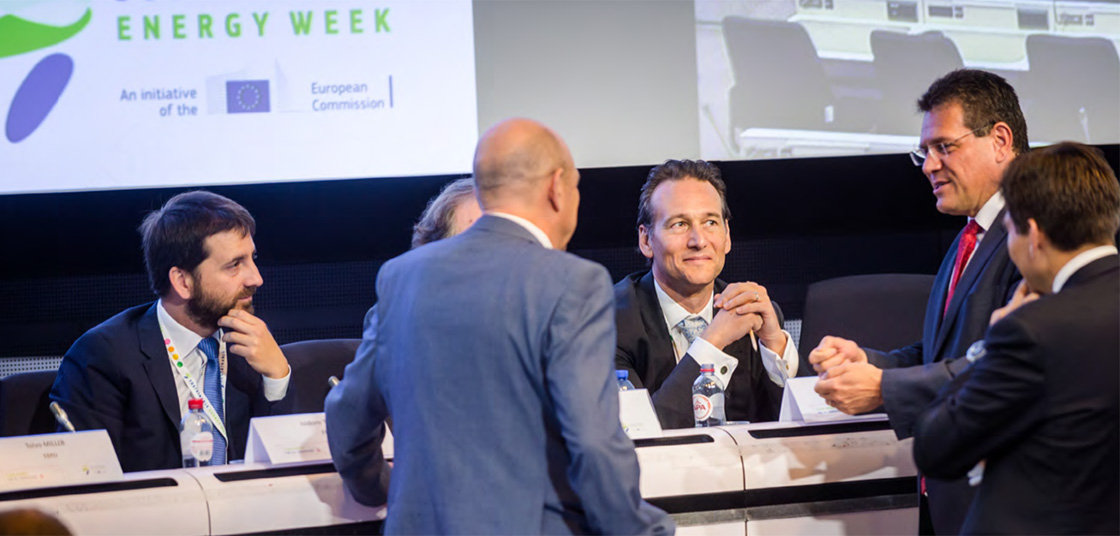 It is believed that the world's buildings can deliver the same services with 80% lower energy use. Therefore, as the EU increases its climate and energy efficiency ambitions for 2030, and competitive renewables, lab grown meat and electric vehicles have captured the public's imagination of a net zero emissions future: where is energy efficiency and building renovation? The answer is "lagging".
It is believed that the world's buildings can deliver the same services with 80% lower energy use. Therefore, as the EU increases its climate and energy efficiency ambitions for 2030, and competitive renewables, lab grown meat and electric vehicles have captured the public's imagination of a net zero emissions future: where is energy efficiency and building renovation? The answer is "lagging".
Renovation is the art of converting the places where we live, learn and work into near-zero energy, or energy positive components of a net-zero emissions world. Even without this "New Bauhaus", individual buildings are successfully transformed across the EU daily, nevertheless the rate of this activity is far below where it needs to be to enable the smooth, just and cost efficient, energy transition envisaged by most Governments.
This is indeed important, as a just climate transition relies on the new employment expected from the "jobs machine which is energy efficiency". Every €1 million invested in the transformation of European buildings creates 18 jobs in the mostly local SMEs responsible for this work.
To deliver these benefits in the EU, the Commission launched the "Renovation Wave" strategy in October 2020, designed to massively improve the energy performance of buildings. By this strategy, the EU27 will more than double buildings renovation rates over the next decade and ensure that these renovations lead to much higher energy and resource efficiency. Overall, the Commission targets the upgrade of 35 million buildings by 2030, requiring €275 billion per annum of investments to renovate these buildings.
The problem at present is that the renovation market is hard to navigate, and homeowners simply may not have the €2.75 trillion of new renovation investments envisaged in ten years. €2.75 trillion is considerably larger than the combined EU budget and the recovery fund. The only European buildings-related market of comparable size is the mortgage market worth around €7 trillion.
If European homes are estimated to be worth €17 trillion, minus €7 trillion of mortgages, then the amount of European savings in home equity is €10 trillion. In the next nine years, a quarter of that home equity needs to be reinvested to save future energy costs, deliver local jobs, improve homeowners' quality of life, reduce inequality and emissions, and address inter-generational equity.
Borrowing against the value of European property to invest to improve it seems fairer than borrowing from the whole population (via more Govt debt), or all taxpayers (via more tax) to improve buildings not always owned by those paying. Furthermore, a decade of academic research points to a correlation between a property's energy performance and its financial value (the "green premium" and/ or avoidance of a "brown discount"), and increasingly energy efficiency is being correlated with the probability of homeowners' arrears or default (ie. better home energy performance results in better credit).
To deliver all of this, we need to awaken the sleeping giants implicated by the Renovation Wave: mortgage lenders. Mortgages fund 40% of the value of all European buildings and one third of all non-financial bank lending is backed by property, as collateral. While this varies significantly between Member States, with 220 million European homeowners and banking customers there are few more appropriate allies than mortgage lenders that are so well positioned to channel trillions of euros of new investment into the assets which house and back their clients' prosperity
This can be achieved by a classic "carrot and stick" approach:
- The carrot comes in the form of distribution and arrangement fees, together with an enhanced, more sustainable lending book, with lower climate transition risk, more green assets, complying with the EU Taxonomy, and happier and healthier homeowner clients.
- The stick is mandatory minimum energy performance standards which the EU Commission has announced it will include in a revised Energy Performance in Buildings Directive (EBPD) by the end of 2021.
Seeing this opportunity, several European banks have already established a voluntary mortgage portfolio standard. This means assessing the energy performance of the buildings which back their mortgages and establishing a science-based trajectory for their average portfolio standard. For instance, ABN Amro recently pledged a portfolio standard of an average energy efficiency label 'A' by 2030 for its €150 billion mortgage book.
Portfolio standards have already proved their worth in reducing energy and transport emissions. In fact, banks are to financing buildings what utilities are to funding renewables, and what vehicle manufacturers are to buying new cars. In the European context, where banks have an outsized role in financing our future, we need them onboard to deliver the trillions of new investment in 10,600 home-renovations-per-day.

Efficiency stakeholders in EU Sustainable Energy Week (2019)
Contact details:
Peter Sweatman
CEO and Founder
Paseo de Recoletos, 5, #604,
28001 Madrid, Spain
Tel: +34 915 764 837
Email: info@climatestrategy.com
Peter Sweatman (@ClimateSt) is Chief Executive of Climate Strategy & Partners and working for 18 years in climate finance. This article is based upon an upcoming report, for more details see website: www.climatestrategy.com